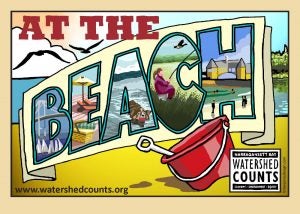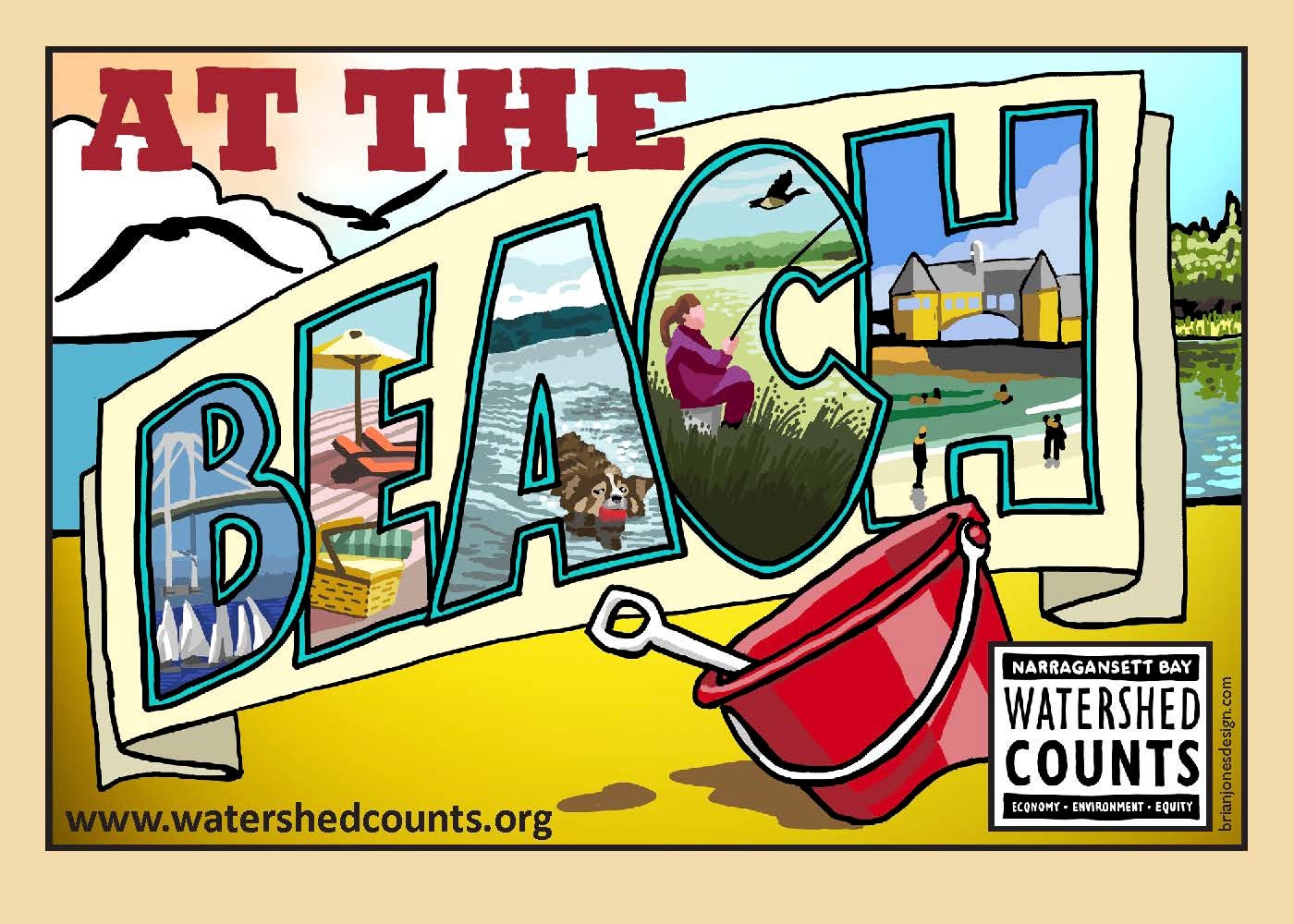 Nicole Rohr, Assistant Director of the URI Coastal Institute
Nicole Rohr, Assistant Director of the URI Coastal Institute
Tom Borden, Program Director of the Narragansett Bay Estuary Program, and I jumped into Watershed Counts will both feet this year. We joined our respective organizations at the exact time that Watershed Counts was gearing up for the annual report, and–in addition to co-coordinating this large, multi-partner project–decided to significantly change the tone and focus.
For the first time since its inception in 2011, the Watershed Counts Annual Report featured a “spotlight” indicator–marine and freshwater beaches. The over 60 partners agreed that it was time to dive-deeper into a single aspect related to the health of the Narragansett Bay watershed region.
So, we rolled up our sleeves, called our partners to action, and pulled together a story of beaches that went beyond closure events but included how beach health is monitored, the leading causes of beach closures, and what local, state, and federal actions are being taken to improve beach health and ultimately protect the economies of Rhode Island and Massachusetts.
Releasing the 2014 annual report in mid-July was nerve-wracking! So many people generously contributed unpaid time to pulling the report together, but what if no one liked the new format or–worse yet–no one even noticed it was released.
Thankfully, the report was well received! In general, the new format was a resounding success and media outlets across the state mentioned the report when talking about RI Governor’s Bay Day and his focus on getting out to enjoy this beautiful natural resource.
Tom and I extend a heartfelt thanks to all of the Watershed Counts partners for their time and effort this year, and every year. Watershed Counts is successful due to your contributions.

